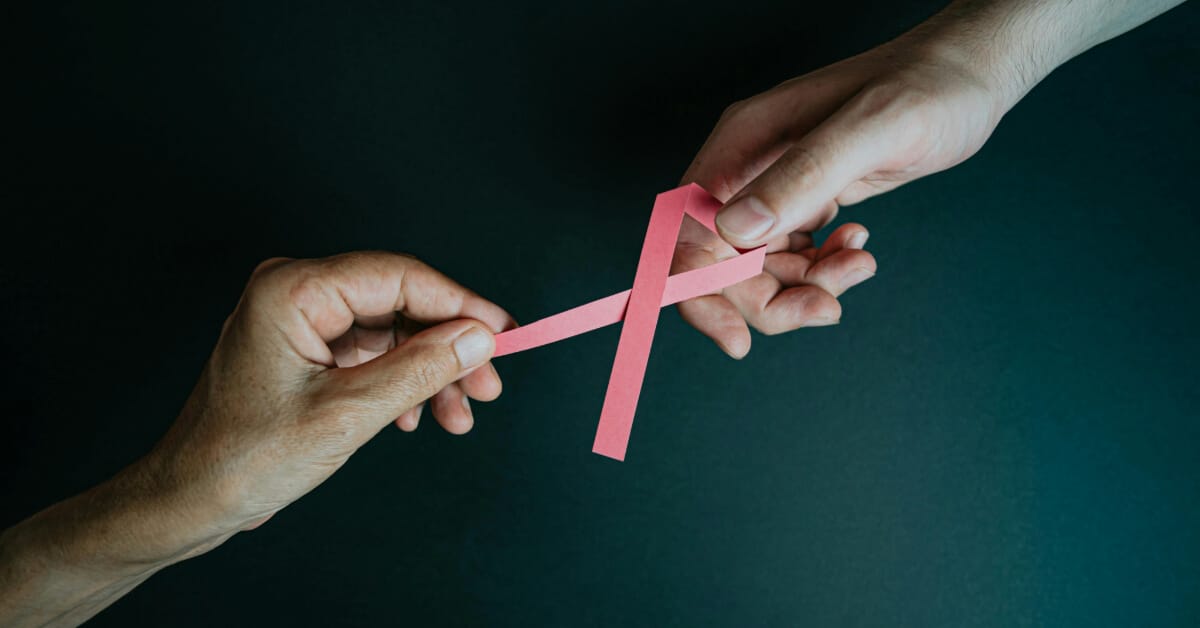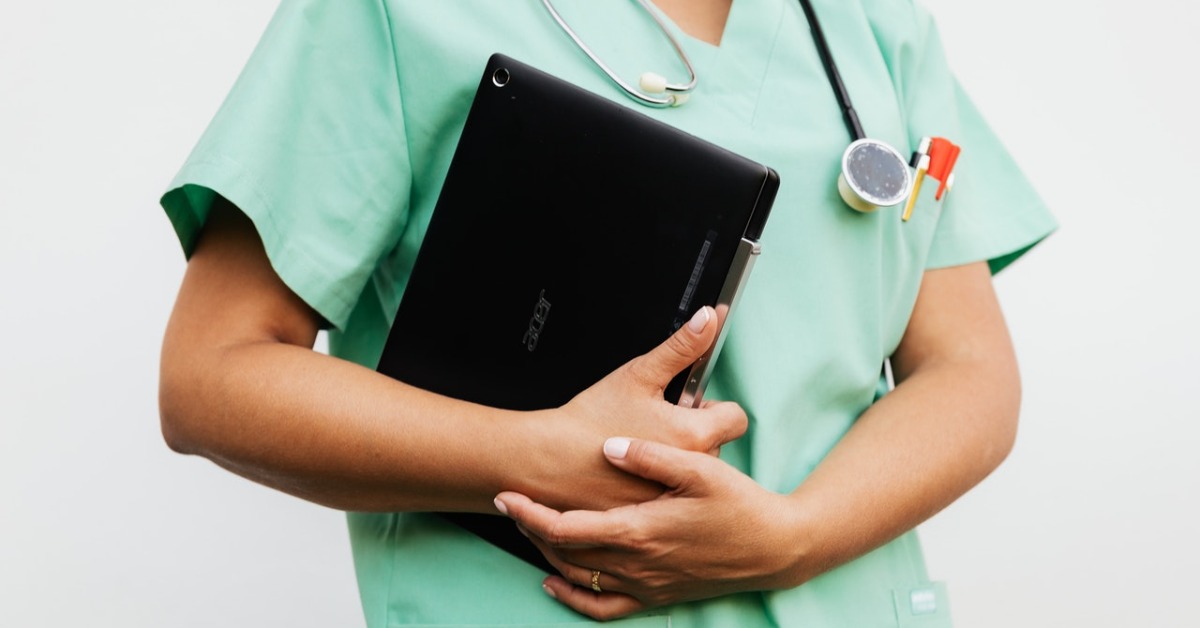October is Breast Awareness Month, and while public-facing campaigns are crucial, for medical and nursing students, it’s a call to action. It’s a reminder to hone the fundamental skills that will be used throughout a clinical career. Many students can relate to the moment they are first asked to perform a clinical breast exam (CBE) during a rotation. It can be a challenge to connect textbook diagrams to the real human being in the room. It’s one thing to read about “skin dimpling” and another to know how to look for it with a patient.
This article serves as a comprehensive guide to this essential procedure. It is designed to walk students through the entire process, from the moment they greet a patient to the final sentence of their documentation. This guide will break down the history, the exam itself, and the crucial skill of patient education, ensuring students are prepared for OSCEs, rotations, and beyond.
Starting With the Story: How to Take a High-Yield Breast History
Before the physical exam begins, the patient’s story provides the essential context. A thorough history is a roadmap, guiding the physical exam and differential diagnosis. Rushing this step is a common mistake. When a patient presents with a breast concern, using a structured mnemonic is a best practice that helps ensure nothing is missed. The “OLD CARTS” mnemonic is a classic for a reason.
OLD CARTS mnemonic for breast concerns
Here is a breakdown of how to apply this framework to a chief complaint like a “breast lump”:
- Onset: “When did you first notice the lump?”
- Location: “Can you show me exactly where you feel it?” (Document this using the clock face and distance from the nipple, e.g., “2 o’clock, 4 cm from the nipple.”)
- Duration: “Has it been there constantly since you found it, or does it seem to come and go?”
- Character: “What does it feel like to you? Is it hard like a rock, or soft and rubbery?”
- Aggravating/Alleviating factors: “Does anything make it more painful or prominent? Does it change with your menstrual cycle?” (Cyclic pain or size change is a huge clue.)
- Radiation: “Do you feel pain anywhere else, like your armpit or back?”
- Timing: “Have you noticed it getting bigger over time?”
- Severity: “On a scale of 1 to 10, how would you rate any pain associated with it?”
Want to learn more about OLD CARTS? Read our OLD CARTS focused blog post about this crucial mnemonic and get some extra tips for efficient history taking.
Beyond the lump itself, it is critical to ask about key associated symptoms and risk factors. Here’s a quick checklist:
- Nipple discharge: “Have you noticed any fluid coming from your nipples?” (If yes, ask about the color—bloody or serosanguinous is a red flag—and if it’s from one or both breasts, and if it happens on its own or only when squeezed).
- Skin changes: “Have you seen any changes in the skin over your breast, like redness, dimpling, or a texture that looks like an orange peel?”
- Personal and Family History: This is non-negotiable. Ask about any personal history of breast cancer or biopsies. For family history, ask about breast and ovarian cancer in first-degree relatives (mother, sister, daughter) and the age at which they were diagnosed.
The Clinical Breast Exam (CBE): A Step-by-Step Guide for Your OSCE
This is where theory meets practice. The CBE is a skill that requires repetition to develop a sensitive touch. For OSCEs and real-life practice, a systematic approach is key.
First, set the stage. Ensure the room is private and warm. Explain to the patient exactly what the exam entails, from inspection to palpation, and let her know she can ask to stop at any time. A proper gown and drape are essential for patient comfort and dignity.
Step 1: Visual inspection
Do not skip this step. The eyes can pick up subtle signs that are easily missed. Have the patient sit upright on the edge of the exam table and inspect the breasts in three positions:
- Arms at their sides: Look for overall symmetry, size, contour, and any visible masses.
- Hands pressed firmly on their hips: This contracts the pectoral muscles and can accentuate subtle skin dimpling or retractions.
- Arms raised overhead: This position can reveal changes in the lower portion of the breast.
During inspection, the specific goal is to look for:
- Asymmetry: While most women have some degree of asymmetry, a new or pronounced difference is noteworthy.
- Skin changes: Look for redness (erythema), puckering or dimpling, and peau d’orange (a thickened, pitted appearance of the skin like an orange peel), which is a classic sign of inflammatory breast cancer.
- Nipple changes: Note any retraction (a nipple pulling inward), deviation, or rashes like Paget’s disease of the breast.
Step 2: Palpation technique
Next, have the patient lie down with the arm on the side being examined raised above her head. This flattens the breast tissue against the chest wall, making it easier to palpate thoroughly.
The most recommended technique is the vertical strip pattern. Studies, like those cited by the American College of Obstetricians and Gynecologists (ACOG), have shown this is the most effective method for covering the entire breast area without missing any spots.
Here’s how to do it:
- Use the finger pads of the first three fingers.
- Start at the patient’s armpit (axilla) and move downwards in a straight line to the inframammary fold (the crease below the breast).
- Move the fingers slightly inward (about one finger-width) and then go back up in a straight line to the clavicle.
- Continue this up-and-down pattern until the entire breast has been covered, from the mid-axillary line to the sternum.
- Use three levels of pressure at each spot: light (for tissue just below the skin), medium (for the mid-level tissue), and deep (to feel the tissue closest to the chest wall).
Step 3: The axillary and supraclavicular exam
Cancer often spreads to the lymph nodes first, so this part of the exam is critical. While the patient is still lying down, gently palpate the axilla (armpit) to feel for any enlarged or firm lymph nodes. Then, have the patient sit up and palpate the supraclavicular area just above the collarbone.
Related videos
You Found Something… Now What? Documenting Your Findings Like a Pro
It’s common to feel a patient’s normal breast architecture and mistake it for a mass. With practice comes the ability to learn the difference. But when a dominant lump is found, the documentation needs to be precise. It creates a clear record for follow-up and for other clinicians.
Here’s the essential information to include in a note for any palpable mass:
- Location: Quadrant, clock face, and distance in cm from the nipple (e.g., Right Breast, Upper Outer Quadrant, 11 o’clock, 3 cm from the nipple).
- Size: Estimate the dimensions in centimeters (e.g., 2 x 1.5 cm).
- Shape: Is it round, oval, or irregular?
- Consistency: Is it soft, firm, hard, or rubbery?
- Tenderness: Note if palpation elicits pain.
- Mobility: Is it mobile or is it fixed to the skin or underlying tissue?
- Borders: Are the edges well-defined or indistinct?
A sample note might look like this: “A 2 x 2 cm firm, non-tender, mobile, round mass with well-defined borders was palpated in the left breast at the 1 o’clock position, approximately 4 cm from the nipple. No axillary or supraclavicular lymphadenopathy noted.”
Empowering Your Patients: Teaching Modern Breast Self-Awareness
The terminology has shifted from the rigid, anxiety-inducing “Breast Self-Exam” (BSE) to the more empowering concept of Breast Self-Awareness (BSA). The goal is no longer to perform a perfect, technical exam on oneself each month. Instead, as advocated by organizations like the American Cancer Society, the focus is on familiarity.
Here’s how to explain it to patients:
- “The most important thing is for you to know what your ‘normal’ feels like. Your breasts change throughout your monthly cycle, and that’s okay.”
- “You don’t need to follow a strict routine, but get used to how your breasts look and feel while you’re in the shower, getting dressed, or lying in bed.”
- “The goal is simple: if you notice a change—like a new lump, skin change, or discharge—that sticks around for more than one cycle, that’s when you should make an appointment.”
- “There’s no pass or fail. This is about being familiar with your body so you can be its best advocate.”
Want to learn more about Breast Pathology? Sign up now for Lecturio’s Breast Pathology course!
From Student to Trusted Clinician: Your Role in Breast Health
The clinical breast exam is more than just a box to check on a list of physical exam maneuvers. It is a fundamental skill that builds patient trust and can genuinely save lives. Mastering the history, performing a systematic exam, and communicating with empathy are the pillars of good clinical practice. As students progress in their training, each CBE they perform will build confidence and refine their skills. They are learning to be safe, knowledgeable, and approachable clinicians—and that is the best tool they can offer their future patients.




